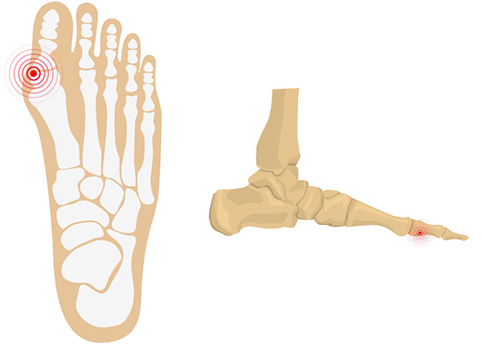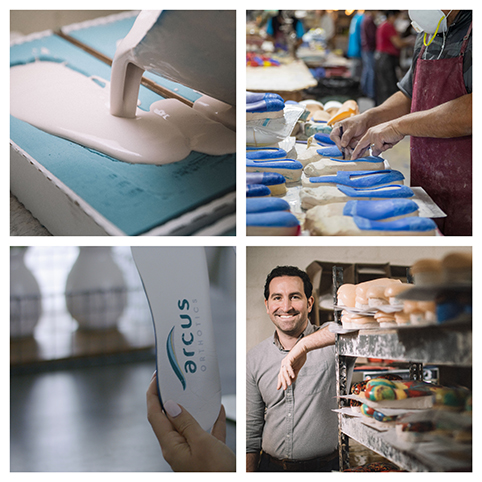
(Clockwise from left) Cover of Healthy Aging Magazine featuring The Dixie Cups, photo courtesy of Rosa Hawkins; healthy feet, Photo: Deposit Photos; Part of the custom-made orthotics process, Photo: Arcus Orthotics.
Imagine how many steps you will take in a lifetime.
On average, if you walk 7500 steps a day, your could walk more than 215 million steps equaling over 110,000 miles. If you follow the 10,000 steps a day plan, your tootsies will have padded the ground even more.
It’s not surprising that as you grow older, your feet may change in shape. They may hurt from the years of wear and tear, to say nothing of too-tight shoes worn to be fashionably correct.
Proper foot health care is often an undervalued part of a healthy lifestyle. Not only are sore feet just a pain, but foot problems can lead to instability, falls, and mobility, affecting one’s overall physical, social, and mental well-being.
The perils of the aging foot run the gamut from heel spurs, bunions, hammertoes, and more.
If you are now regretting wearing those high-heeled shoes for hours, running miles before running shoes were even invented, or clomping around in flip-flops, you will appreciate these tips on foot care from podiatrist, Dr. Adam Kaplan.

Tight shoes can cause bunions to develop. Photo: Deposit Photos
1. Chances are your shoes are too small
Every few years, be sure to get fitted for new shoes. As we age, our feet change in size and shape. Wearing ill-fitted shoes can cause many problems, including blisters and calluses.
2. Remember, longer doesn’t always mean wider
If you feel you need wider shoes, opt for an E, 2E, or even 4E width. You can always remove your current insole and replace it with custom orthotics for a more comfortable and tailored fit.

Bunions. Photo: Arcus Orthotics
3. The importance of socks
Just as crucial as wearing properly fitted shoes is wearing the correct type of socks. Make sure to select a poly-blend sock that is seamless and not too tight. A compression sock or athletic sock is recommended and will help to reduce swelling in your lower extremities.
4. Pedicures are for more than cosmetics
Most patients don’t realize that what may appear to be a minor toenail issue could lead to something greater. Be sure to report it to your podiatrist so they can fix the problem promptly and correctly.

Custom-made orthotics process steps and finished orthotics. (Clockwise, top left, 1, 2, 4) and Dr. Adam Kaplan. Photo: Arcus Orthotics.
5. Prevention is key
You may not notice any changes yet, but getting an early start on prevention can save you from a lot of pain, medical expenses, and living a sedentary lifestyle.
Devices like custom foot orthotics can help provide comfort, stability, remove pressure from painful areas of the foot, alleviate high or low arch pain, plantar fasciitis, arthritis, tendonitis, limb length discrepancy, and more.
If needed, taking steps to visit a podiatrist, receive proper nail care, buy custom orthotics, and attend yearly checkups are all important factors in maintaining healthy foot care and a healthy lifestyle overall.













